(This presentation has been prepared for an investor in order to discuss the development of the Salaman Park in Riyadh and the different possibilities and ways to approach the mobility issues that the city currently faces)
Talking about King Salaman Park, an upcoming project in Riyadh that envisions developing a park spanning across 13.4 sq.km (size of central park New York, 3.41 sq.km) with 400,000 expected daily users, we question whether the current mobility systems can allow for easy access to this park by the residents of the city.
Riyadh is a city facing severe traffic congestion hence the only means of easy access to this park is considered to be the upcoming metro. Even though the metro line stretches across 176 km and has 85 stations, the lack of last-mile connectivity and the hard climate of the city reduces the catchment area and hence the public transport is accessible to only 2.58% of the total population of the city. Hence to create a more sustainable network the feeds users to these future projects, a more radical idea needs to be developed for the city of Riyadh.
How will Riyadh look like in the future?
Let us think back to a historical Arabic city! The Suq was a fundamental part of the social life and of the city. People drank tea and were smoking shisha in the locals along the Suq. But in today’s fast-growing Arabic cities, these elements are getting lost. We want to bring these elements back to Riyadh, as a combination of a traditional and futuristic platform to connect people.
Right now 80% of Riyadh’s population is living in the center and is “connected” by car. A few big projects are already planned and the population will grow from 5,1 million to 8,5 million until 2030. More people cause more traffic and Riyadh will struggle to deal with traffic congestion.
The new metro system can not solve the already existing traffic problem, because it connects only 183.000 people in the city. Our network aims to connect 4.414.000 people to the public transport system.
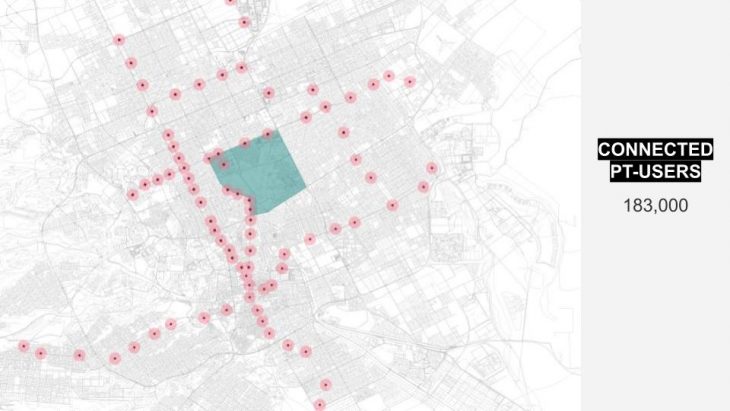
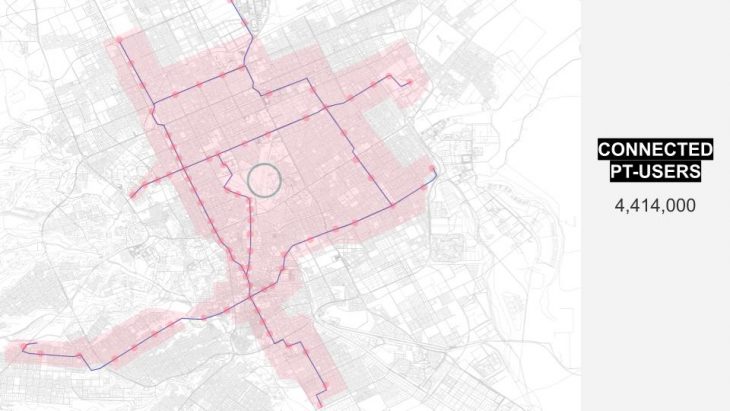
Our proposal is a platform that connects almost the whole city and it is a combination of the public transport network and the green space network which would be unique for the United Arab Emirates but also for the rest of the world.
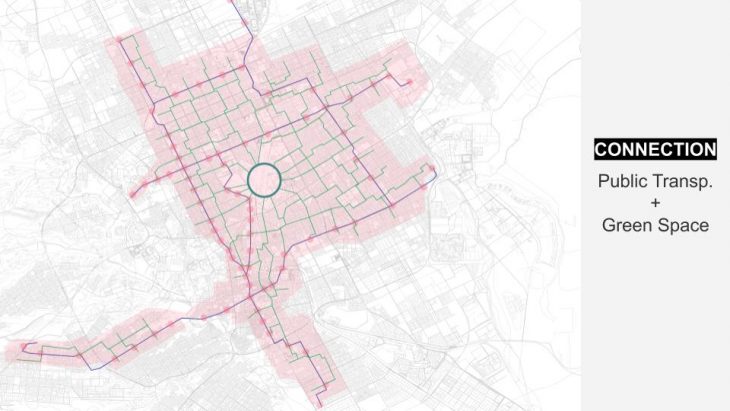
As we see in the example of Vienna, right now modern cities are overlapping the two networks of public transport and greenspace. In the future, Riyadh will be the best-connected city in the UAE. The city will be known for the combined network of public transport and greenspace. At the same time, this network will give Riyadh the image of the modern Arabic city which has not lost the connection to the historical Arabic City. International business and tourists will be attracted to see Riyad and its unique way of facing the future without losing the historical elements of the Suq.
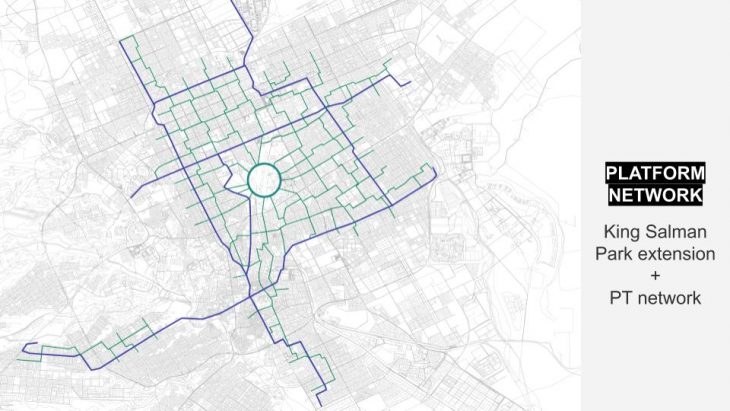
What if Salaman Park is the entire city?
And I am sure you are wondering how can we reach every part of the vast city, right? As you well know, the city of Riyadh is generally conformed by these superblocks where 17200 people live.

However, you know that this configuration doesn’t work. It is not sustainable neither efficient. This only right turn is time and fuel consuming and creates ‘barriers’ and does not allow people to come together. But what if we could transform this configuration into a new green space (extension of the Salaman Park), which would be a platform axis of new commercial activity and gathering meeting points?
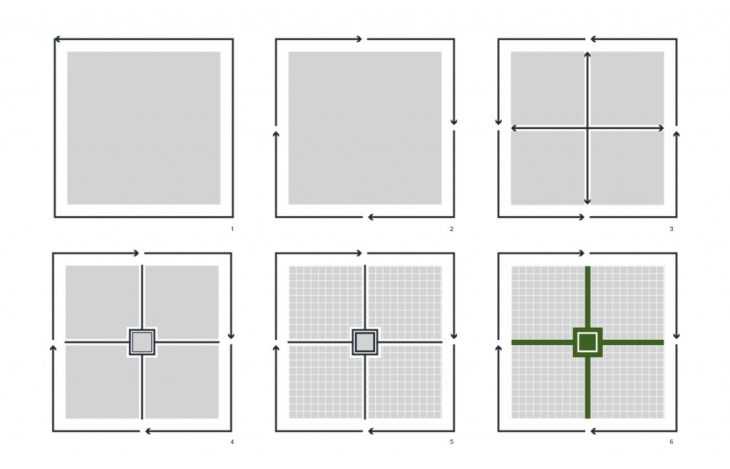
What if at the end of these green axis we would allocate Metro stops? And you might wonder, how come if the distance towards these stops would be about 15′. How can we pretend that people would take this route under the warm sun?
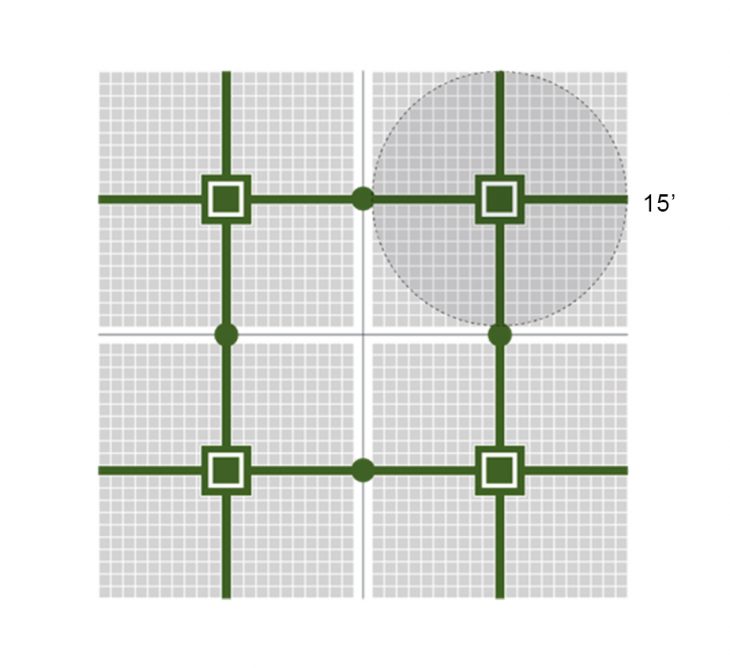
I am aware of the plan of Saudi to create 10 million trees for 2030, and I do believe you want to be part of this because it will transform the whole Saudi into something even more unique. What if you could become a strong part of that? According to a study, the right amount of tree cover could lower summer daytime temperatures by as much as 12ºC. With these and the latest technology improvements, we could bring people together into those green corridors which would facilitate access to the main park.

But that is not it. What if you could benefit from the development of those corridors? Let me explain this matter to you.
Imagine that you invest in those green axis or corridors. And imagine that you create a platform for the future development of green and autonomous mobility. By investing in that land with low value right now, future companies would come to you in the near future and would have to pay you back to develop their businesses and future mobility proposals in that area.
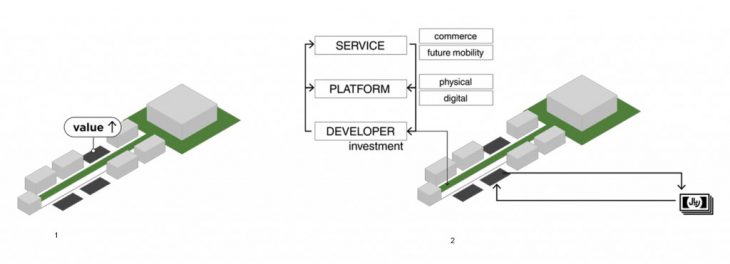
Like this, a physical platform becomes a digital one as well, where entrepreneurs from all around the world would want to have their investments on your land.
And in this way, acting locally, you are not just helping the development of local communities but developing a grid system that would bring the whole city of Riyadh to Salaman Park.
4-Times Central Park is a project of IaaC, Institute for Advanced Architecture of Catalonia
developed at Master in City & Technology in (2019/2020) by:
Students: Alejandro Quinto, Jochen Morandell, Kushal Saraiya
Faculties: PhD Gaia Sgaramella & Giuseppe Vallelonga